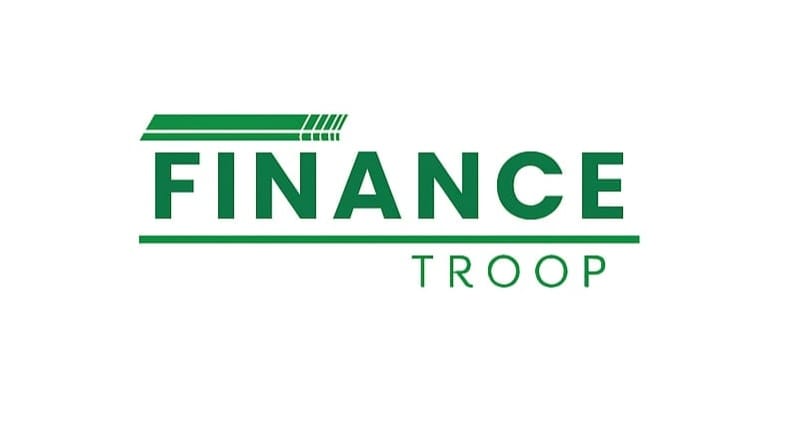In a rapidly growing economy like India’s, small businesses need access to reliable funding just as much as large enterprises. Whether you’re a local kirana store owner or a technology startup founder, business loans can help you scale, stabilize, or simply survive through tough cash flow cycles.
However, loan approval isn’t just about asking — it’s about showing. In 2025, understanding the requirements for business loans in India will increase your chances of approval from banks, NBFCs, and government schemes.
This article covers all the essential business loan requirements — from eligibility and documentation to financial preparation.
What Is a Business Loan?
A business loan is a borrowed amount of money that a business can use to:
- Grow operations
- Purchase equipment or inventory
- Hire staff or invest in digital platforms
- Manage cashflow cycles
- Start a new setup
These loans can be:
- Secured (backed by collateral)
- Unsecured (no assets pledged)
Banks and NBFCs in India offer unsecured loans between ₹50,000 and ₹50 lakh+, depending on business performance, documentation, and credit profile.
Who Can Apply for a Business Loan in 2025?
If you fall into one of the categories below, you’re eligible to apply for a business loan:
- Sole proprietors (shop owners, traders, freelancers)
- MSMEs (manufacturing, service, or trading units)
- Self-employed professionals (doctors, designers, accountants)
- Startups (with at least 6–12 months of operations)
- Registered partnerships, LLPs, and Pvt Ltd companies
You must also meet the following basic conditions:
- Age between 21 to 65 years
- Indian citizenship
- Minimum business operational history of 6 to 12 months
- A current account and verifiable cashflow/income
- No history of major loan defaults
Business Loan Requirements – Documents and Eligibility
Here are the usual business loan eligibility requirements as followed by most banks and NBFCs in 2025:
Requirement Type | Details |
Business Proof | GST Certificate, Udyam MSME Registration, Shop License |
Operational History | Minimum 6 months – 2 years (depending on lender) |
Bank Transactions | Current account with at least 6 months of active use |
Financial Proof | Last 1–2 years ITRs, P&L, Balance Sheet (if applicable) |
KYC Documents | PAN, Aadhaar, passport-size photo, rental/ownership proof |
Credit Score | Minimum 700+ preferred (especially for unsecured loans) |
Loan Purpose | Clearly defined (working capital, expansion, inventory etc.) |
Note: The final list may depend on the type of business, loan amount, and lender category (PSU/private/NBFC).
Document Preparation Tips for Faster Loan Approval
Banks take documentation seriously — and poor paperwork leads to instant rejection.
If you’re applying for a loan in 2025, organize the following in a digital folder in advance:
1. Udyam Certificate or Business Registration
Even home businesses qualify under MSME — registration is free at udyamregistration.gov.in
2. GST Certificate or Shop Registration
Helps validate your legitimacy for tax-paying activities
3. Bank Statements (Current Account)
Submit the last 12 months’ statements in PDF (clean, verified source only)
4. ITR (Income Tax Returns)
1–2 years’ returns boost your creditworthiness
5. Rent Agreement or Shop Ownership Paper (if needed for KYC)
6. Loan Write-Up or Summary
Include a one-page document on:
- Business type
- Loan amount requested
- Planned use of funds
- Expected monthly repayment ability
This shows professionalism — and increases reviewer confidence.
Credit Score & EMI Affordability
In 2025, banks and NBFCs depend heavily on your CIBIL score for unsecured loans.
- 750+: Easily eligible for most loan amounts
- 700–749: May qualify for mid-range loans (~₹5–10 lakh)
- 650–699: Possible only from NBFCs, with higher interest
- Below 650: Unlikely to qualify unless you provide collateral
Also, your EMI-to-income ratio should be below 40–50%. If current EMIs + upcoming loan EMI exceed half your monthly income, the bank may reject the application.
How Much Business Loan Can You Get?
Your eligible amount depends on:
- Monthly turnover & profits
- Credit score
- Business category (trader, service, etc.)
- Existing liabilities (EMIs, credit card dues)
Here’s a general idea of loan limits:
- Unsecured small loan (₹50K–₹5L): Quick, minimal docs
- Unsecured medium loan (₹5L–₹25L): Bank + NBFCs, CIBIL needed
- Secured bigger loans (₹25L–₹5 Cr+): Needs collateral, strong financials
Lenders also look at digital payment volumes, billing frequency, online visibility, and more
Popular Places to Apply for Business Loans (India 2025)
You can apply for business loans through:
Public Sector Banks:
SBI, PNB, Bank of Baroda (ideal for registered MSMEs and formal businesses)
Private Sector Banks:
HDFC, Axis, ICICI (best for established firms with good credit)
NBFCs/Digital Lenders:
Lendingkart, FlexiLoans, Indifi, NeoGrowth, Razorpay Capital (faster for small loans, app-based)
Government Schemes:
MUDRA (₹10 lakh max), PMEGP, Stand-Up India, CGTMSE
These often require a basic Udyam/MSME certificate to qualify.
Collateral Rules
Business loans up to ₹10 lakh (like under MUDRA) are usually collateral-free.
Above ₹25 lakh, some form of asset may be required — such as:
- Land or commercial property
- Fixed deposit
- Gold or shares
- Guarantee from a third party
NBFCs may disburse higher unsecured loans at slightly higher rates, but loan tenure might be shorter (2–4 years).
Conclusion
Getting a business loan in 2025 isn’t just about need — it’s about preparedness.
Banks no longer approve loans based on “hope” or verbal promises. You’ll need:
- Legit documents
- Recorded income
- A responsible credit profile
- A focused loan purpose
Whether you’re a trader, startup founder, or MSME owner, organizing your business financially is the first step toward unlocking valuable credit lines.
Frequently Asked Questions (FAQs)
1. What is the eligibility criteria for a business loan in India 2025?
Answer:
To get a business loan in 2025, you must:
- Be aged between 21 and 65
- Have a business registered in India (Udyam/GST, etc.)
- Maintain a minimum turnover of ₹10–40 lakhs, depending on lender type
- Have filed at least 2 years of ITRs
- Maintain a credit score of 700+ These criteria are based on RBI, SIDBI, and leading banks’ official guidelines, matching the requirements set forth in the latest Indian lending policies.
2. What documents are required to apply for a business loan in India?
Answer:
As per the latest norms and government verified reports, the standard document checklist includes:
- PAN and Aadhaar (promoter/firm)
- Business registration certificate (Udyam/MSME)
- GST registration
- IT returns for past 2–3 years
- 12-month bank statements
- Company PAN and address proof
These are required by both banks and NBFCs, backed by approval data from IRDAI and SIDBI.
3. Which government schemes offer business loans with less documentation?
Answer:
Top Indian schemes offering simplified documentation include:
- PMEGP Scheme – Less paperwork, but needs a business plan
- MUDRA Loan – For small businesses/startups with ₹50K–₹10L target range
- Stand-Up India – For SC/ST/Women; basic registration + PAN required
These schemes are based on verified 2024–25 updates from MSME Ministry and Startup India portals.
4. Can I get a business loan if my business is less than 1 year old?
Answer:
Most banks need at least 1 year of operational history, but new-age fintech platforms and government schemes like MUDRA or Startup India provide funding even if your business is recently established. According to RBI’s 2024 Digital Lending Report, fintech now fund businesses with just 6 months activity, if digital records are strong.
5. What is the business loan approval rate in India in 2025?
Answer:
According to SIDBI and RBI loan statistics for FY 2023–24, the business loan approval rate for MSMEs is around 64%, up from 42% in FY 2020–21. Fintech platforms show even higher rates for verified digital borrowers due to AI-based assessments.
6. Which loans require minimum documents for approval?
Answer:
Loans that require minimum documentation in India 2025 include:
- MUDRA Loans (under ₹10L)
- Digital NBFC loans like Lendingkart, Indifi
- Working Capital Loans for Udyam-registered MSMEs
These are processed under the newer Digital Lending Framework by RBI, reducing paperwork but ensuring KYC and repayment history.
7. Can I get a business loan without ITR?
Answer:
Yes, some new-age NBFCs allow alternative income proof like bank statements or digital invoices instead of ITRs. However, government schemes and top banks still expect 2–3 years of ITRs, especially for loans above ₹10 lakhs.
8. What is the loan amount offered for new businesses?
Answer:
Loan amount varies based on registration, turnover, and credit score. On average:
- Startups can get ₹50K–₹10 Lakhs (via MUDRA or fintech)
- Registered MSMEs can get ₹5–₹50 Lakhs (term loans, CC, OD)
- Collateral-backed loans can go up to ₹5 Cr+
- This matches the loan slabs reported in RBI statistical releases 2019–2024.
9. Is GST registration mandatory for business loans?
Answer:
Most lenders now ask for GST registration as proof of business activity. Exceptions occur in agriculture, small-scale traders, or loan amounts below ₹5L. In all cases, having GST increases your approval chances and builds lender trust.
Click here to more information: Best Home Loan Insurance Plans in India (2025) – Coverage, Benefits, and Must-Know Tips




